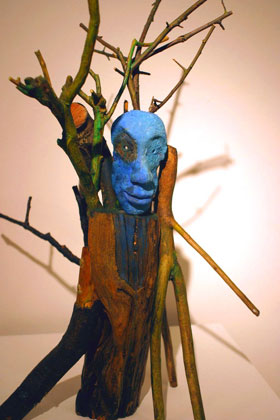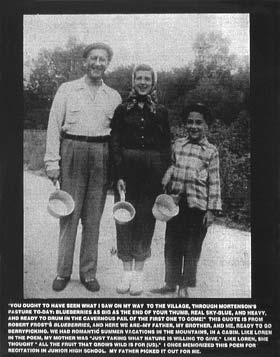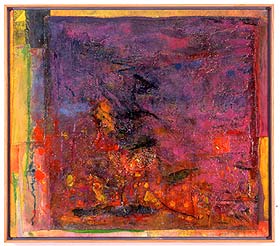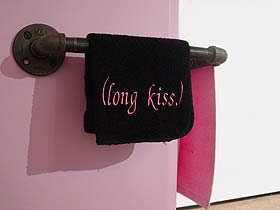Numbing Us to Death:
Happy War Games from Generation Y
| June 14, 2004 – July 14, 2004
Curated by Joyce Korotkin. Created and Curated by Young Curators, Renaissance Middle School Aljira, a Center for Contemporary Art, presents, Numbing Us to Death: Happy War Games from Generation Y, an in-depth exploration and analysis of violence in contemporary culture by adolescents in their own voice. The exhibition focuses on the connections these youths have identified in the toys of their childhood that are marketed directly to them and their relationship to the all too real violence of the world in which we are currently living. The exhibition is on view at Midland Gallery, 3 Midland Avenue, Montclair, NJ. “Today’s adolescents, the post-911 generation, are targeted by the entertainment industry as consumers of violence-saturated merchandise that simulates reality to an increasingly frightening degree. They have inherited a century of wars that have directly and indirectly impacted their own families and are bombarded as well by the current reign of terrorism on a global scale,” observes artist/teacher Joyce Korotkin. The concept for this exhibition evolved from a visit to Aljira’s recent exhibition of the work of Judith K. Brodsky. Brodsky’s installation of large-scale prints of vintage photographs and text chronicles three generations of her family’s emigration from Europe and assimilation into American culture. However, underlying Brodsky’s celebration of family is the horror of the Holocaust, which her family narrowly escaped. The Young Curators’ responses to the show revolved around the latter. Two images were of particular interest to many of the curators. One portrayed a little boy wearing a c.1950s-style cowboy outfit, replete with double-cap-gun and holster; the other, little girls in ballet costumes. Through ensuing collaborative discussions, they evolved the concept for their own show: reality versus play; war, games, families, uniforms, war again. |
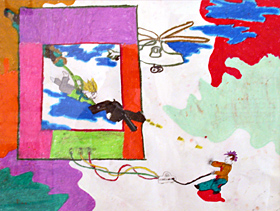 |

